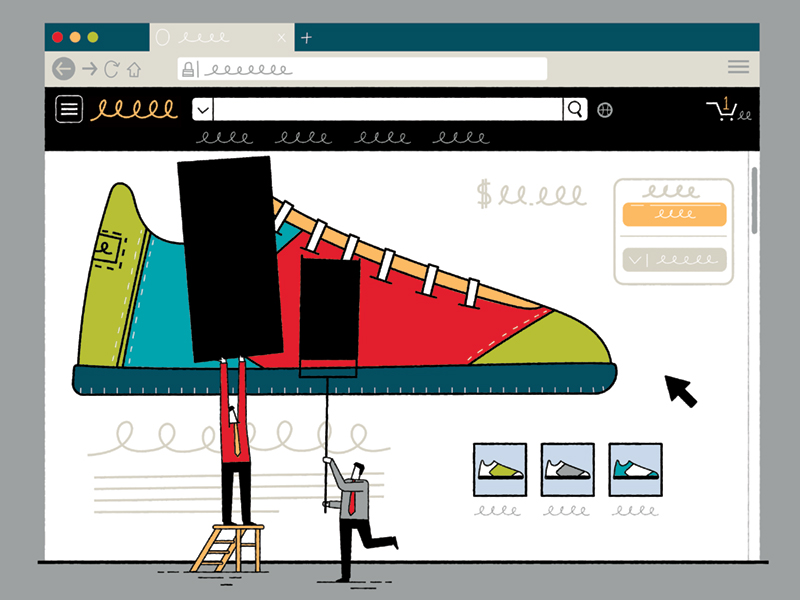Takeaways
- Marketing research conducted by Julio Sevilla found that concealing a portion of a visually attractive item may make it more appealing.
- Whether it was a tennis shoe or a member of the opposite sex, people responded best when part of the image was obscured.
- Study participants reacted most favorably when about one-third of an image was obscured.
- The finding repeated itself with men and women of varying ages.
In a marketplace overflowing with product information, especially online, new University of Georgia marketing research found that consumers crave a little mystery.
In a study published February 2020 by the Journal of Marketing, Terry College of Business marketing professor Julio Sevilla reveals that concealing a portion of a visually attractive item may make it more appealing.
“One of the main takeaways from this research is that we have more technology now, and retailers are using it to supply more information like 360-degree views of their products,” Sevilla said. “However, showing more is not always better. If we give consumers less information to make their decisions, surprisingly, it can generate higher preferences.”
In the new paper, “Leaving Something for the Imagination: The Effect of Visual Concealment on Preferences,” Sevilla and his co-author, Robert Meyer of the Wharton School at the University of Pennsylvania, focused on what effect the amounts of visual information provided had on viewers’ perceptions of both objects and people. Whether it was a tennis shoe or a member of the opposite sex, people responded best when part of the image was obscured.
They found that people reacted most favorably when about one-third of an image was obscured.
In one part of the study, Sevilla and Meyer looked at the effect concealment had on general appeal. They showed computer-generated “appealing faces” of men and women to participants of the opposite sex with different levels of concealment. The faces rated most favorably, by both male and female participants, were those that had the middle third of the face – part of the eyes and the nose – obscured.
“We would show two-thirds of the face omitting parts of the eyes and the nose, which have been shown to be the most important part, but people still rated those partially concealed pictures the most attractive,” Sevilla said.
For Sevilla’s work studying consumer behavior and retail packaging, the effect carried over to products.
“Back in the day, before online retail had progressed, you may have had access to a few snapshots of a product. Today, consumers can see images showing every angle of a product,” he said. “Do you always want to see all of the information, or is there a sweet spot? Does it always generate higher preference when you have 100% of the information about a product?”
Products that featured photos from every angle in their online presence were routinely rated as less desirable, Sevilla said.
For the second part of the study, the researchers conducted an experiment with athletic shoes and cars and came away with closely similar results. They showed photos of shoes and cars from every angle – leaving nothing out – to one set of study participants. Other participants were shown incomplete visual information of the same items – fewer photos and fewer angles. The participants who were shown two-thirds of the product, meaning a third of the visual information was concealed, reported the highest intention to buy the products.
“It’s usually good to show about two-thirds of a visually appealing item,” he said. “We were surprised. It makes sense to hide something unattractive about a product but in this case, we were using visually appealing products, and there was still a benefit to a little bit of concealment.”
This effect held across different demographics, he added. Men and women of varying ages all preferred products that concealed about one-third of the visual information about the products.

